By: Toby Hagon
For many people, electric vehicles (EV) represent a brave new world, not just in the way they transport us around but also in the jargon associated with them.
From kilowatt-hours to nickel manganese cobalt chemistry, there’s suddenly a whole new lexicon that’s often quite different from the twin cams and variable valve timing we’ve spent decades getting used to.
With EVs, it’s the batteries and electric motors that provide the greatest source of potential confusion. But ultimately with a few key understandings, it’s easy to get your head around the EV lingo.
RELATED:
EV battery recycling »
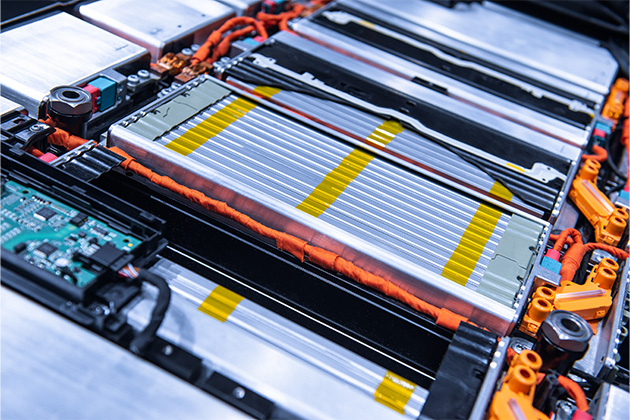
The similarities
Despite the influx of new technology, there’s plenty that remains the same with an electric vehicle and its electric motor (or motors).
It still produces power, and that power is still measured in kilowatts. It’s the metric measure of horsepower, which is still used in the US and UK but hasn’t been used here for decades.
And just like an internal combustion engine (ICE) vehicle, EVs also produce torque, which in cars manifests as the shove in the back you can feel when the car is accelerating. In Australia, torque is measured in Newton-metres.
That said, the way an EV produces its kilowatts and Newton-metres is quite different from the way internal combustion engines do it. A petrol engine, for example, takes time to build revs and produce its maximum torque before then producing peak power. All of which means a wait for the car to produce its maximum.
An electric motor, on the other hand, makes its torque peak from zero revs. So the second you press the throttle to the floor it can be making the sort of pulling power that thrusts you back in your seat. It’s one of the things that makes an EV feel so swift and responsive.
But EVs are at their best from standstill, and as they gather speed, can feel less responsive than their initial torque output might appear to promise.
NMC or LFP? Know your batteries
All EVs are powered by a lithium-ion battery. But there are currently two very different battery chemistries, each with their pros and cons.
The most common is nickel manganese cobalt (NMC or, sometimes, NCM) and as the name suggests it uses some minerals that also happen to be relatively expensive. So while they have a relatively high energy density (it can store lots of energy) they’re more expensive to manufacture.
An emerging technology that’s increasingly popular with many of the top selling EVs in the country is lithium ferrous phosphate (LFP) batteries. They do without nickel and cobalt – so are cheaper to produce - but instead require more iron and other metals so usually end up being larger and heavier than NMC batteries. The gap between the two is narrowing though.
NMC batteries don’t like being regularly charged to a 100 per cent state of charge, so typically come with a recommendation to leave those full charges to road trips. Conversely, LFP batteries prefer to be topped up regularly. The owner’s manual will provide recommendations on how often to fully charge your EV.
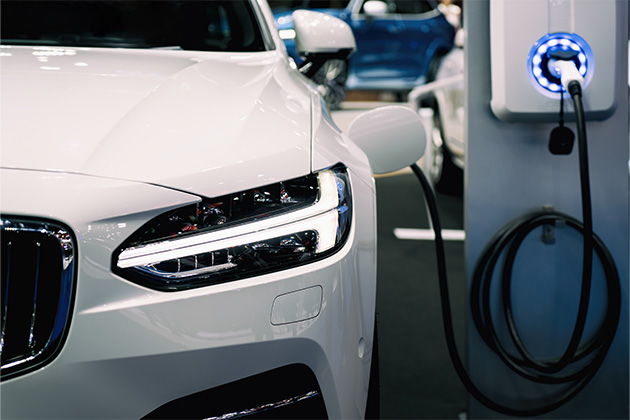
It's all about electrons
Whichever battery type an EV has, it’s doing the same thing. It stores chemical energy and when called on converts that into electrical energy.
It does that with things called electrons, which flow between two electrodes. The negative electrode is called the anode and the positive electrode is the cathode. In between the anode and cathode is an electrolyte (usually a liquid or gel, but it can also be a solid), which is a bit like the superhighway along which electrons travel.
The efficiency and size of those components determines how good a job the battery does of allowing those electrons to flow – and how many can flow – which in turn determines how much power it makes.
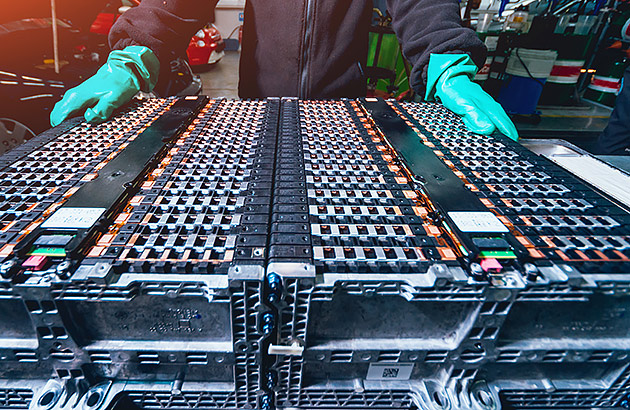
An EV’s power outputs are closely related to the power its battery can make. Often a more expensive version of a particular model can produce more power using the same motors as a cheaper variant purely because it has a bigger or better battery.
So having a battery that can deliver is crucial. That’s also why batteries are the technological focus for car makers and battery manufacturers the world over.
AC/DC
The chemistry, construction and smarts of the battery also determine the charging characteristics of an electric vehicle.
How fast an EV charges depends primarily on what’s charging it but also on its battery and onboard battery management system (BMS), which is sensors paired with advanced software that monitors things such as the state of charge, battery temperature, ambient temperature and voltage of each battery cell.
Manufacturers will typically quote a maximum charge rate when charging with regular AC power (for a slower charge) or DC power (for a faster charge).
When charging with AC (alternating current) – the stuff that comes out of your powerpoint at home – the electricity needs to go through an inverter to convert it to DC power, which is how batteries store electricity.
However, when DC charging it goes directly into the battery pack, one of the reasons it’s quicker to charge using direct current.
Chargers also have power
How fast a charger can charge an EV starts with how much power it can produce. The electrical power provided by a charger is measured in the same kilowatts used to determine how powerful an electric motor is. The higher the number, the faster it can charge.
The highest-powered chargers in Australia can provide up to 350kW of power – about 150 times more than you get out of a home powerpoint – but there’s currently not an EV in the country that can actually take that much power.
But that doesn’t mean you can’t charge your EV from it. As with plugging things into your home powerpoint, there’s never a danger with plugging into a charger that can provide more power than your car is rated to accept. The car’s BMS will only take what it wants, at times fluctuating the charging power depending on the temperature and state of charge.
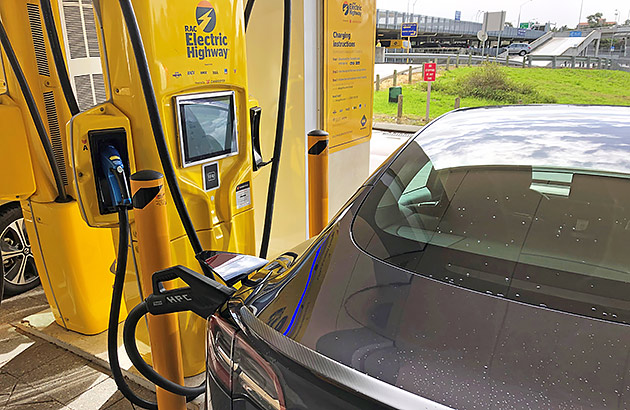
Battery capacity is key
It’s easy to be baffled by the numbers relating to an EV’s battery pack. But there’s one that’s more important than the rest: its capacity in kilowatt hours, or kWh.
All batteries store DC electrical energy, which is measured in kilowatt-hours. Think of it as similar to the energy stored in a tank of petrol.
While kilowatts measure power, kilowatt-hours are a measure of energy. Typically, an EV has a battery with between 40kWh and 120kWh of energy storage capacity, although overseas there are some with even more.
One kilowatt-hour (kWh) of energy is equivalent to one kilowatt of electricity flowing for one hour. Charge for an hour on a charger producing 50kW and, if your EV can accept it, you will supply 50kWh to the car.
Or you could put a 1kW trickle of electricity into the battery for 50 hours and be delivered exactly the same 50kWh.
With the exception of Tesla – which solely markets the driving range rather than the capacity of the battery - manufacturers quote the battery capacity in the brochure or specifications.
Be careful, though, because some manufacturers quote the gross capacity of the battery, while others quote the net - or useable – capacity (some publish both), which is lower.
There can be around 10 per cent difference between the two; because batteries don’t like being fully charged or fully drained, manufacturers will usually put a buffer that cannot be accessed in regular operation.
So even if the battery says it’s full or empty, that’s only what the car is able to use, not necessarily what is available. For an idea of how much energy your EV can store it’s the useable capacity that is most relevant.
Volts, cells and more
Other figures you may see spruiked by manufacturers include how many cells and/or modules are in the battery pack.
EVs can have hundreds or even thousands of cells that can be combined into modules which are then put together to form the battery pack.
A cell is an individual battery that can often be the size of a battery you’d put in a torch or a battery-operated toy. Combine hundreds together and you get the more serious punch required to shift an EV.
But whether you’re combining thousands of AAA batteries or hundreds of D batteries doesn’t make a difference to the end result.
The numbers of each are largely irrelevant to the consumer – in the same way as the bore and stroke of a piston engine gets little notice from anyone except enthusiasts – and is more an indication of how it was manufactured.
So look at the overall capacity of the battery and what it can produce in conjunction with the electric motors.
Some brands will also talk of the voltage – usually 400V, although a handful of EVs can charge at up to 800V – which again gives little indication of the vehicle’s performance but can talk towards its charging ability.
Again, it’s more the battery capacity and vehicle range that are the numbers you should be looking at.
Calculating charge times
Working out how long your EV will take to charge requires the capacity of the battery in kWh and the charging power of the charger in kW.
Just as the battery can produce power (measured in kilowatts) to be turned into movement through the motor, it can also accept power as part of the charging process.
A home powerpoint puts out about 2.3kW, so can potentially add 2.3kWh per hour. To work out the time for a full charge of an EV with a 60kWh battery you divide 60 by 2.3 to arrive at about 26 hours.
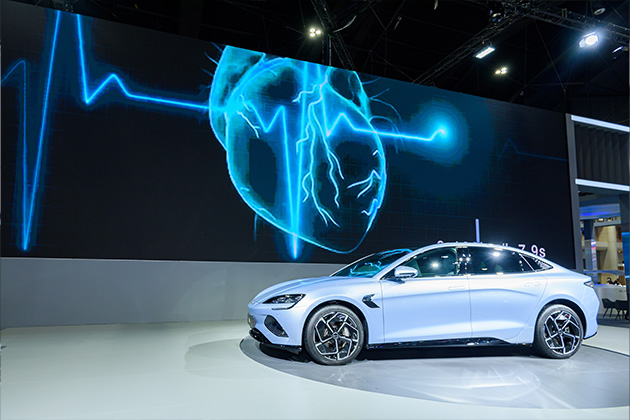
However, as with any electrical circuit, there are losses during charging; as with a phone or laptop, the battery will heat up slightly, which is indicative of energy being lost. When using AC power, some energy is also lost in converting the energy to DC to charge the battery, so this may need to be factored in.
To be safe with your calculations you want to add about 10 per cent to the estimated time, so something like 29 hours for a full charge.
The same battery using a home wallbox making 7.4kW of power would take about nine hours for a full charge (60 divided by 7.4 plus around 10 per cent). However, once you’re faster DC charging you can’t use the same calculations. That’s because the BMS will adjust the charging power depending on those various aforementioned factors.
If you’re in sub-zero temperatures, for example, the BMS may reduce the charging rate. Similarly, if you’ve been driving the car hard and the battery pack is already warm then the BMS may temporarily lower the charge rate.
And all EVs will adjust the charge rate – how much power they’re accepting – depending on the state of charge. When it’s nearly empty, a battery will charge at its fastest, whereas when it’s almost full the charge rate drops dramatically.
So it’s a bit of a how-long-is-a-piece-of-string scenario when trying to determine how long it will take a car to charge using a rapid charger.
The most accurate estimation of DC charge speeds is likely to be one provided by the manufacturer, although even then it’ll likely have an asterisk highlighting that the charge times may vary.
Fuel use vs electricity use
Most people are familiar with litres per 100 kilometres, which is a traditional measurement of fuel use. EVs can have a similar measurement but it relates to kilowatt-hours.
Most EVs use between 12kWh and 30kWh per 100km, depending on their size, performance and efficiency.
Those numbers are about double what you’d expect for a petrol engine, but it’s countered by electricity that is much cheaper per kilowatt-hour than fuel is per litre.
As at November 2023, petrol prices are hovering just above $2 per litre – and they’re volatile – whereas electricity in Western Australia is currently about 31c per kWh and increases only gradually each year.
It means an EV currently costs about one-third as much to power than a car powered by petrol.
Members save 10% on RAC's Home EV chargers
Faster, smarter, convenient - power your EV at home with our 7.4kW and 22kW chargers. Includes full installation and an app for easy scheduling.
